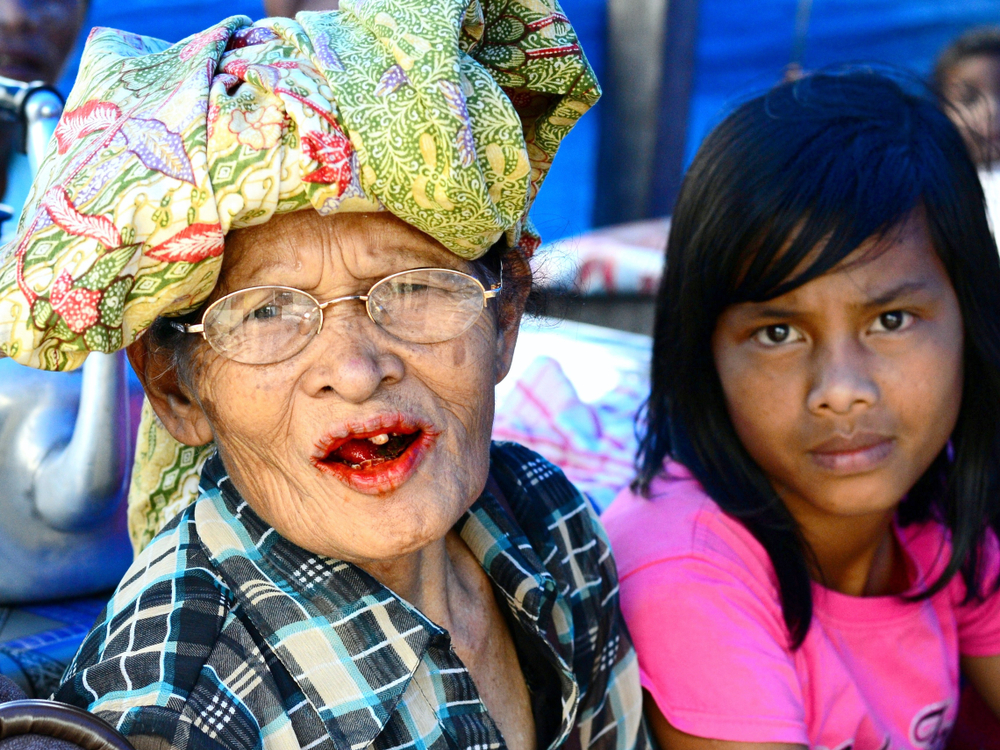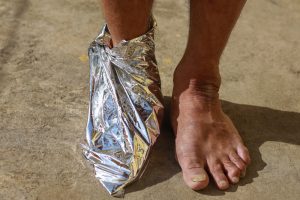In Asia, people commonly chew betel nuts. Also known as areca nut, it is a popular psychoactive substance. It is especially popular in countries such as India, Bangladesh, and Myanmar.
The people in India, Pakistan, Bangladesh, and Sri Lanka usually consume betel nut as part of a mixture known as “paan,” which involves wrapping betel nut in a leaf along with other ingredients like tobacco, lime paste, and spices. Meanwhile, people in Taiwan and certain parts of mainland China often chew betel nut alone or mix it with other ingredients. The Philippines has its take on betel nut consumption, with the practice of chewing betel nut with tobacco and wrapping it in a leaf called “nga-nga.” Papua New Guinea has a variety of forms of betel nut consumption, including paste, powder, or wrapped in leaves. Chewing the leaf releases the active ingredients.
Betel nut contains several harmful ingredients that can have negative effects on health. One of the most concerning components is arecoline, a natural alkaloid found in the nut. Arecoline is addictive and can cause a range of health issues such as oral cancer, high blood pressure, heart disease, and psychiatric disorders. Betel nut also contains tannins, which can stain the teeth and contribute to tooth decay. Other harmful substances found in betel nut include chavibetol, which has been linked to liver damage, and nitrosamines, which are known to be carcinogenic.
While betel nut is culturally significant in many Asian societies, it poses a range of health risks for users.
Oral Health Risks
Betel nut use is linked to a range of oral health risks, including tooth decay, gum disease, and oral cancer. The habit of chewing the nut produces an alkaline pH, which increases bacterial activity in the mouth, leading to tooth decay and gum disease. Furthermore, researchers have found that the carcinogenic compounds present in betel nut can cause oral cancer.
Cardiovascular Health Risks
Betel nut consumption causes an increased risk of cardiovascular disease. The nut contains arecoline, which can cause vasoconstriction, a narrowing of the blood vessels that increases blood pressure. It also causes high blood pressure. Long-term use also results in an increased risk of heart disease, stroke, and other cardiovascular diseases.
Mental Health Risks
The use of betel nuts has also been linked to mental health problems, including addiction, depression, and anxiety. The nut contains alkaloids that have a psychoactive effect, producing a mild sense of euphoria and heightened alertness. However, regular use can lead to addiction and tolerance, with users needing to consume increasing amounts to achieve the same effect. Moreover, its use has been linked to an added risk of depression and anxiety.
Pregnancy Risks
Betel nut consumption during pregnancy poses a significant risk to both the mother and the fetus. The nut contains arecoline, which can cross the placenta and harm fetal development. Studies have found that its use during pregnancy is associated with low birth weight, preterm birth, stillbirth, and developmental problems in children.
Legal and Cultural Status
Despite the health risks, its use remains legal and culturally significant in many Asian countries. In India, for example, it is used in many religious and social customs, and its consumption is deeply ingrained in the country’s culture. The substance is also readily available and affordable, making it an attractive option for many people.
Conclusion
Many Asian societies deeply ingrain betel nut consumption as a cultural practice. However, the practice poses significant health risks, including oral health problems, cardiovascular disease, mental health problems, and pregnancy complications. We need to launch public health campaigns to raise awareness about the risks of betel nut use and promote healthier alternatives. Additionally, policymakers should consider laws to reduce access to and eating of the substance.













